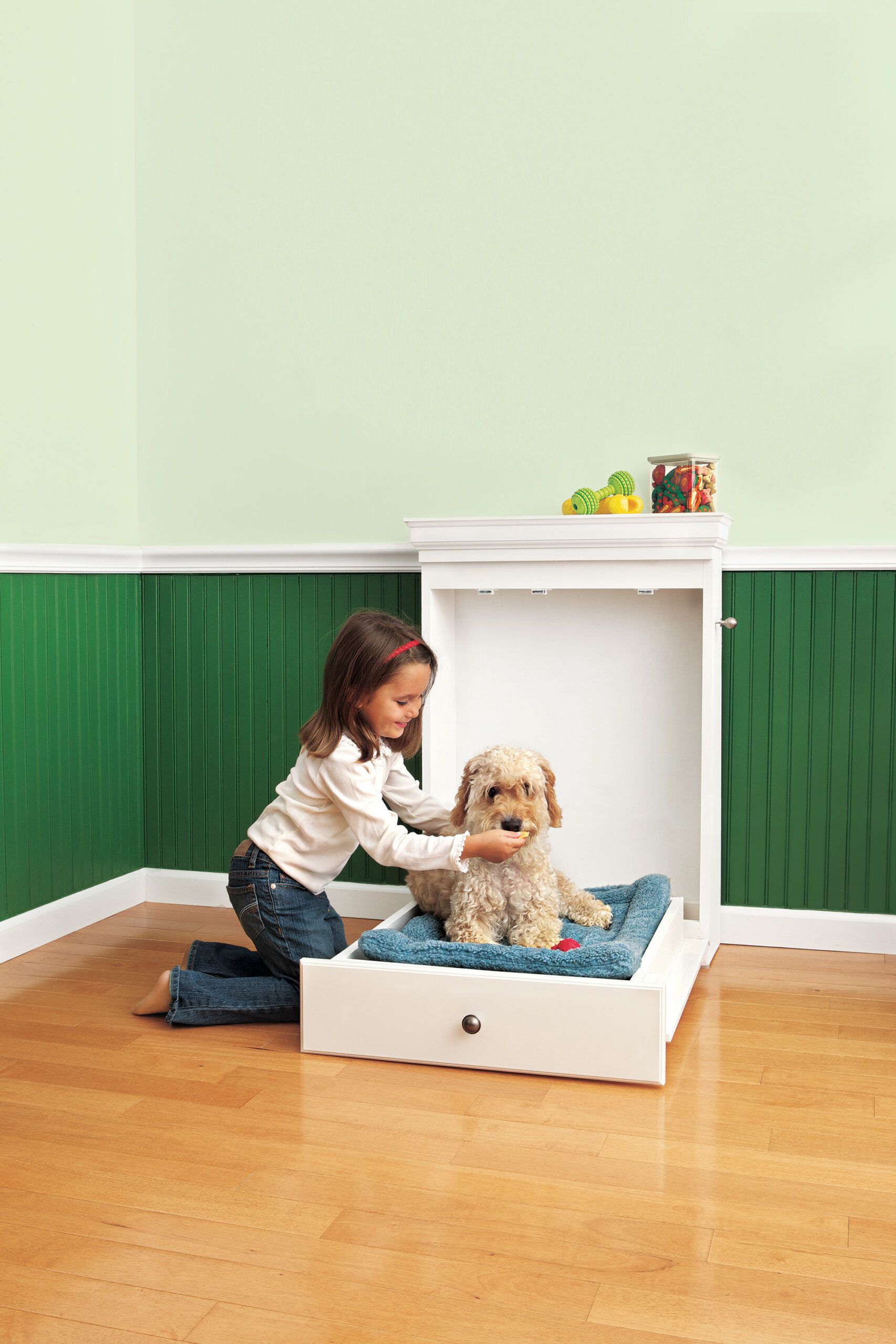Project details
Skill
Cost
Estimated Time
 Miter saw
Miter saw Circular saw
Circular saw Drill/driver
Drill/driver Pneumatic nailer
Pneumatic nailer Screwdriver
Screwdriver Putty knife
Putty knife Paint brushes
Paint brushes
Your dog may be as cute as a button, but the typical dog bed—bulky, obtrusive, matted with fur—not so much. Instead of banishing his sleeping spot to the basement, leave it front and center and build a pint-size Murphy bed that stows a sleeping pad inside a handsome built-in cabinet. The flat top offers a convenient spot for your dog’s treats and toys, and when guests are due to arrive you can tuck the bed out of the way with little fuss.
Before you dash off to buy materials, size up your pooch and the room he’ll sleep in to make sure you’ve got enough space. (A Murphy bed for a Great Dane will be a mighty big piece of furniture.) The easiest way to size the bed is to make it large enough to hold a pad or mattress that your dog is comfortable sleeping on; check product labels for the size that suits your breed. If you’re not using a mattress, get the bed’s dimensions by measuring your dog’s length and width while he’s noozing, then adding at least 6 inches to each number. Whether he sleeps on a mattress or a favorite old blankie, your dog will be glad to have a bed of his own—one that’s tidy enough to put in any room.
Step 1
Overview for How to Build a Murphy Bed for Your Dog
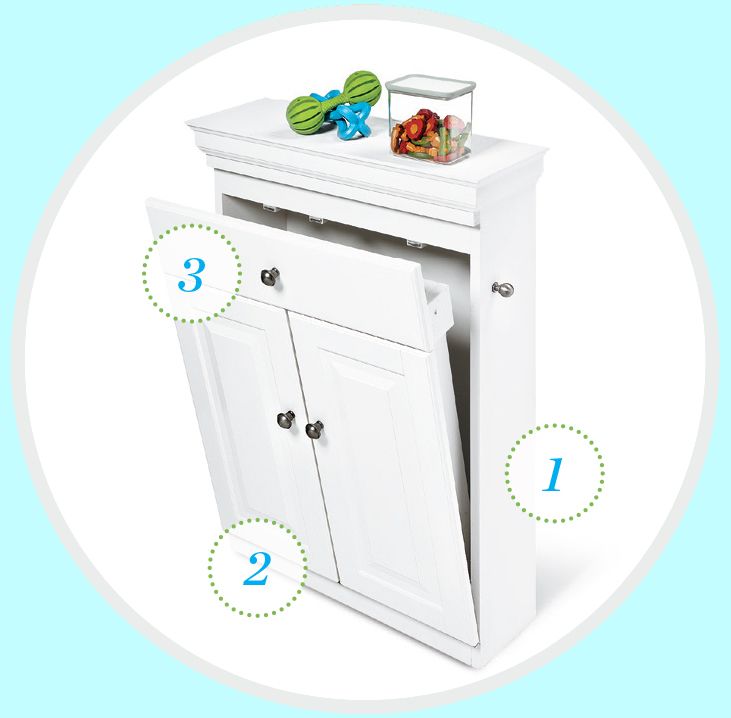
Here are the main parts of the project, in brief.
1. The Cabinet. A simple box built from plywood and 1× material hides the mattress; we topped ours with a shelf trimmed with molding. Magnetic catches and a locking pin on one side secure the deck upright when not in use.
2. The Deck. Cabinet doors, held together with cleats and attached to the cabinet with a toy-box hinge, fold down to serve as the deck. The mattress is enclosed in a frame of 1× material that’s attached to the back sides of the doors.
3. The Drawer Front. A false drawer is fastened to the back of the bed frame with a toy-box hinge so that it can fold up to act as the “foot” of the Murphy bed.
Cut List to Build a Murphy Bed for Your Dog
For the cabinet:
1×8 sides: two @ 35¼ inches
1×8 top: one @ 24 inches
1×4 crosspieces: four @ 22½ inches
1×4 header: one @ 24 inches
¼-inch plywood back: one @ 24 x 36 inches
2 ½ inch baseboard: three @ cut to length
shoe molding: three @ cut to length
For the bed frame:
1×4 short sides: two at 19 inches
1×4 long sides: two @ 25 inches
1×4 crosspieces: two @ 19 inches
1×4 stop block: one @ 3 inches
Step 2
Cut the Pieces to Size
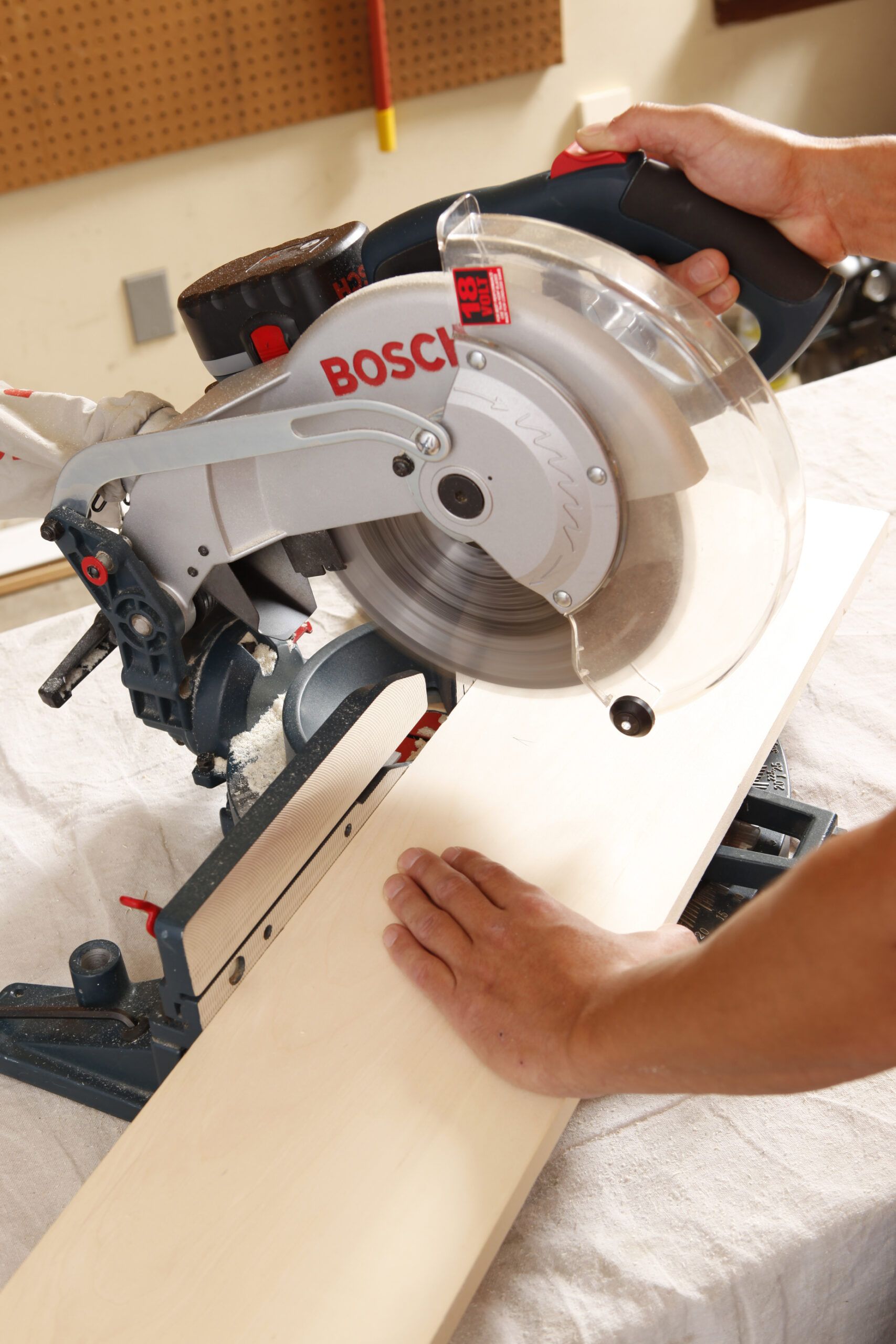
Use a miter saw to cut the 1×8 and 1×4 material to size according to the cut list. Use a circular saw to cut the ¼-inch plywood to size.
Step 3
Assemble the Cabinet
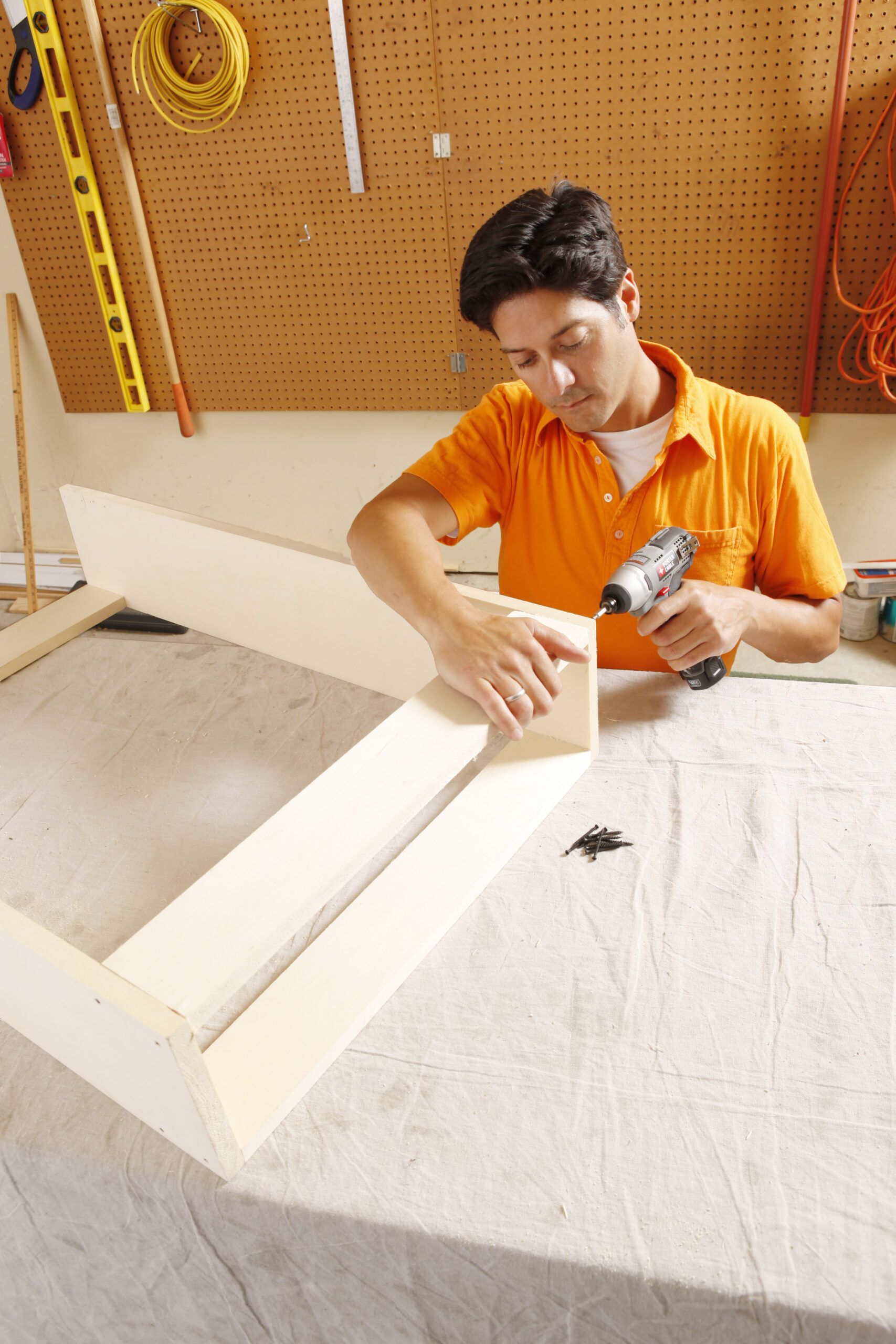
Set the two 1×8 sides on edge and sandwich two 1×4 crosspieces on the flat between them, so that one crosspiece is flush at each end. Secure the pieces by driving 1¼-inch trim-head screws through the sides and into the edges of the crosspieces. Secure a third 1×4 crosspiece flush with one end of the sides, as shown; this will be the bottom of the cabinet. Sandwich a fourth 1×4 crosspiece between the sides, with its top edge 1½ inches below the top of the cabinet. Secure the pieces with 1¼-inch trim-head screws.
Step 4
Attach the Cabinet’s Top
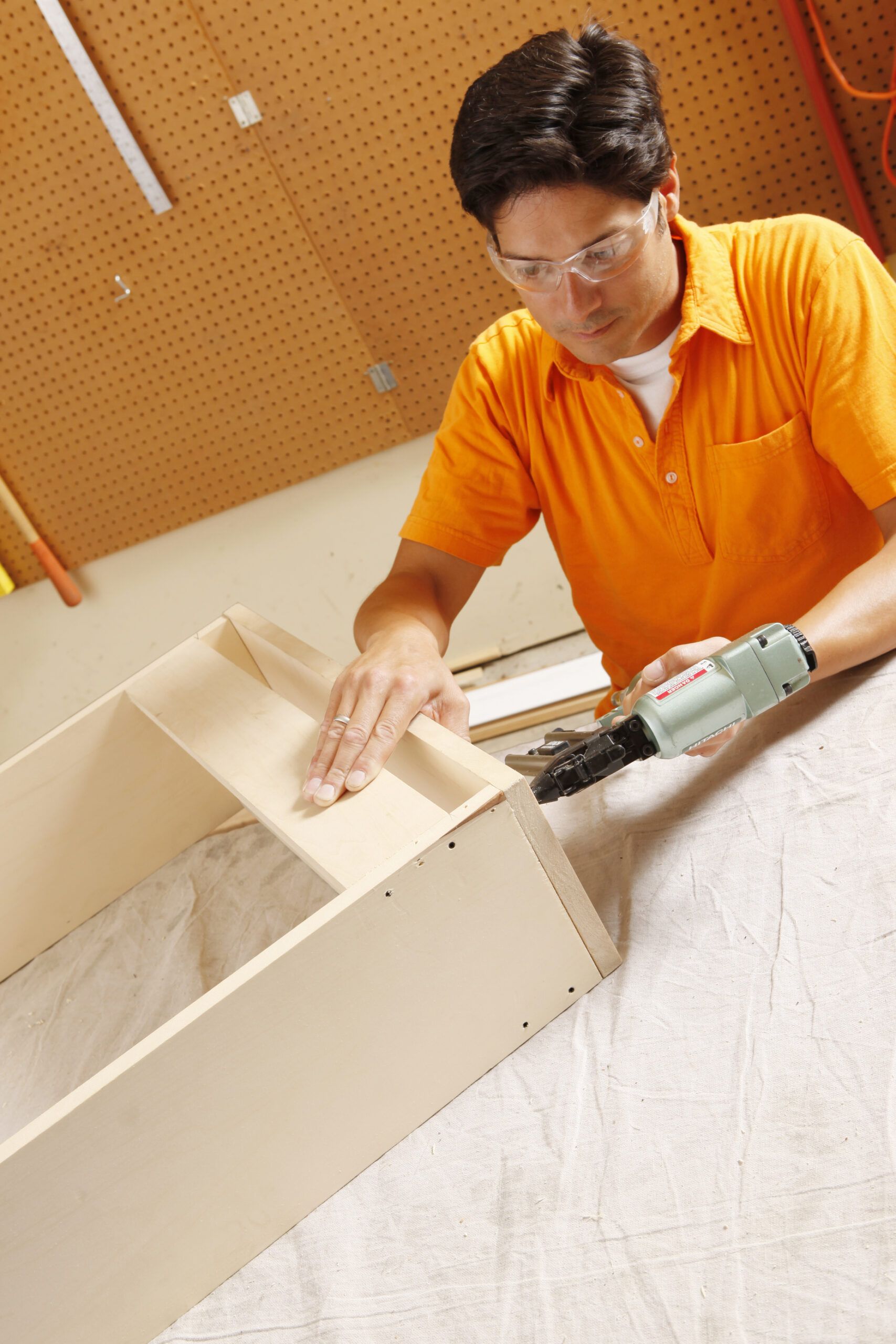
Apply wood glue to the cabinet’s three top edges. Set the 1×8 top in place. Use a pneumatic nailer and 1¼-inch finishing nails to secure the top to the cabinet.
Step 5
Install the Header
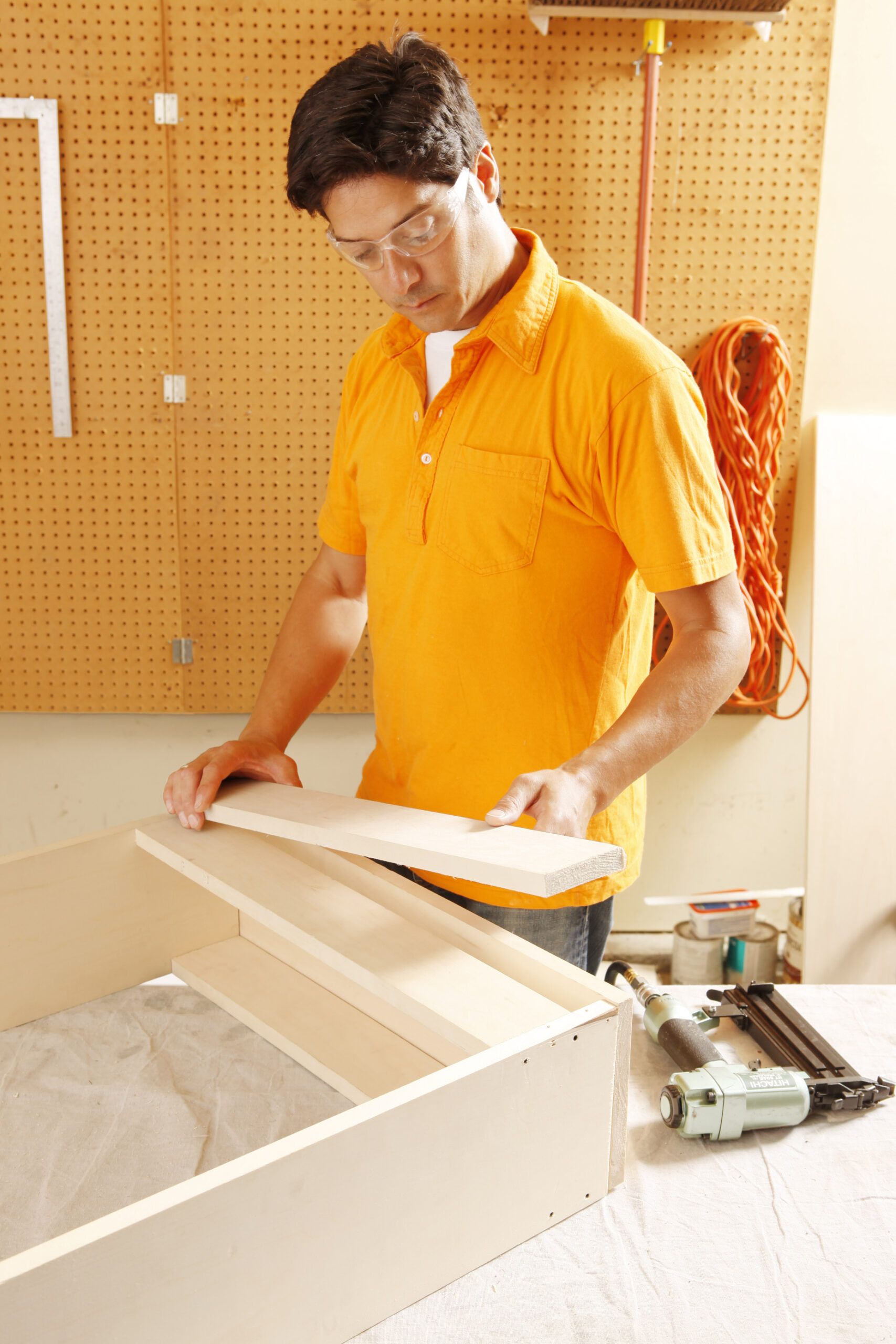
Lay the cabinet faceup and place the 1×4 header on the flat so that it’s flush with the top and sides. Use a pneumatic nailer and 1¼-inch finishing nails to secure it to the cabinet. This header will become a nailing surface for the molding added in Step 6 (next).
Step 6
Cut and Attach the Baseboard Molding
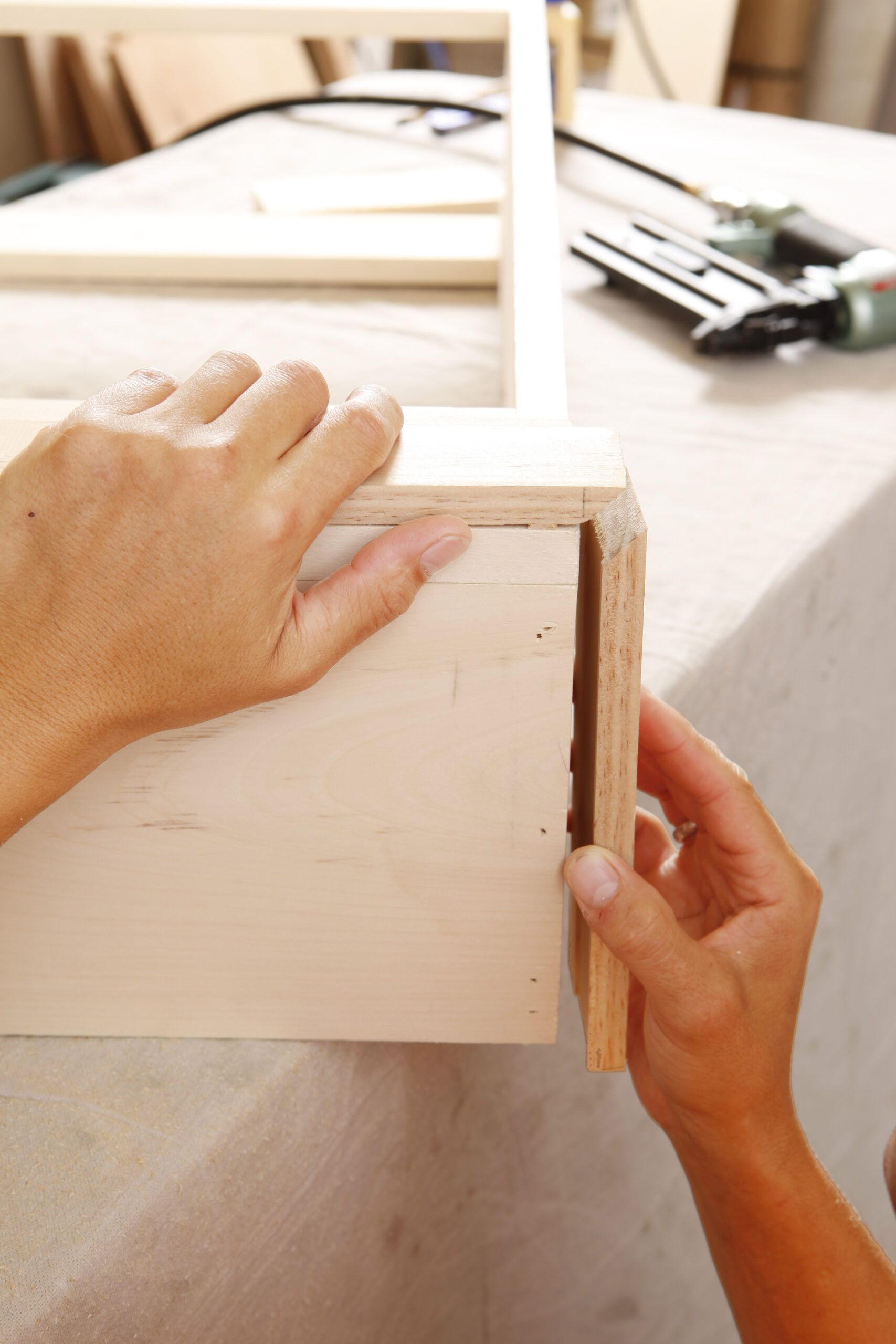
Lay a length of baseboard molding upside down on the header, its square edge flush with the top of the cabinet. Mark the ends of the cabinet on the molding. Miter the molding at opposing 45-degree angles. Use wood glue and a pneumatic nailer with 1¼-inch finishing nails to secure the molding to the header. Miter the joining angle on the molding for one side of the box, hold the mitered piece in place, and mark a straight cut flush with the back of the cabinet. Use a miter saw to make the straight cut, then glue and nail the piece in place. Repeat for the opposite side.
Step 7
Cut and Attach the Shoe Molding
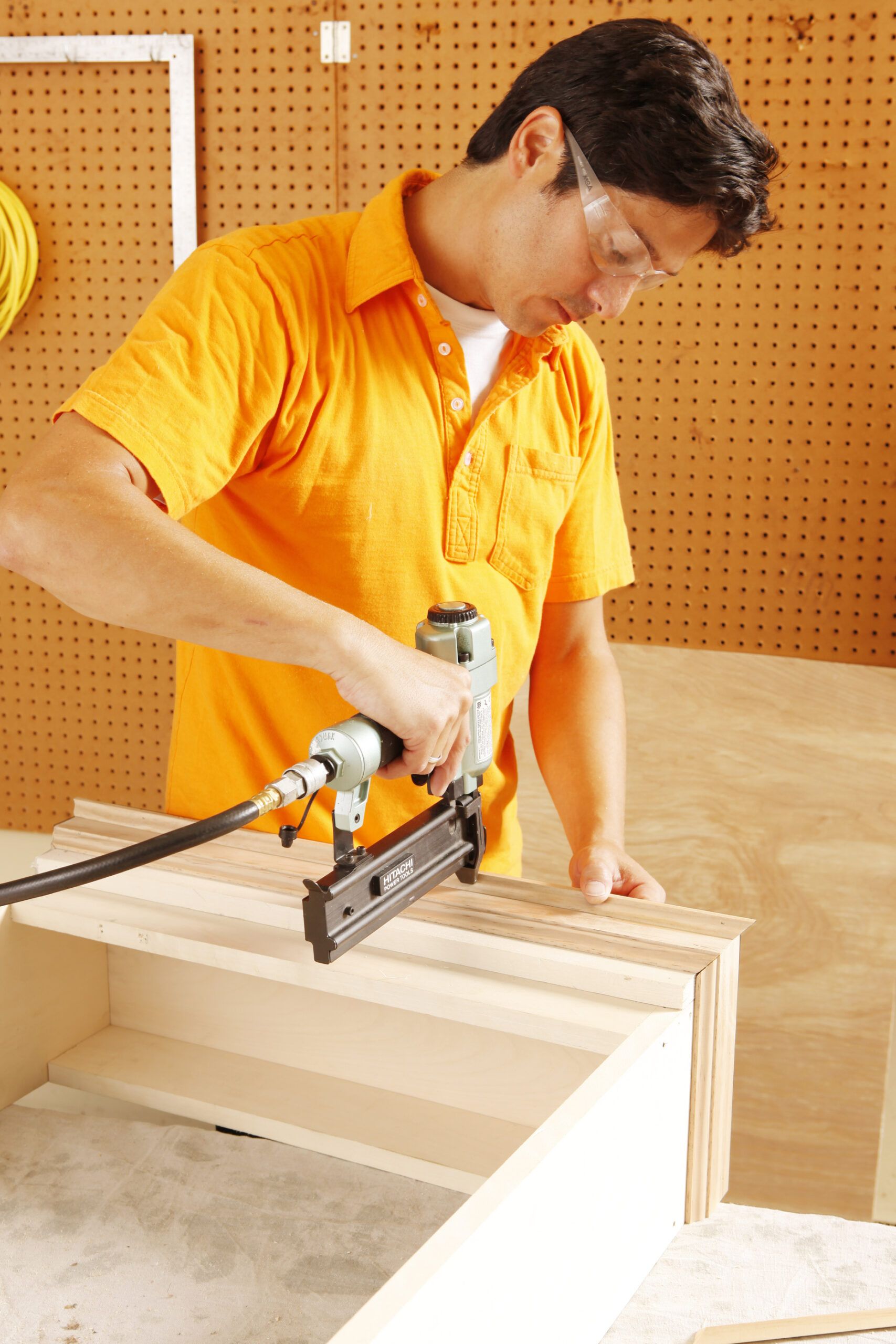
Layer a piece of shoe molding on the front face of the baseboard, with the molding’s flat edge flush with the top of the cabinet. Mark and miter the molding in the same manner as you did the baseboard in Step 6. Use wood glue and 1¼-inch finishing nails to secure it. Follow the procedures from Step 5 to cut and attach the shoe molding to the sides of the cabinet.
Step 8
Assemble the Bed Frame
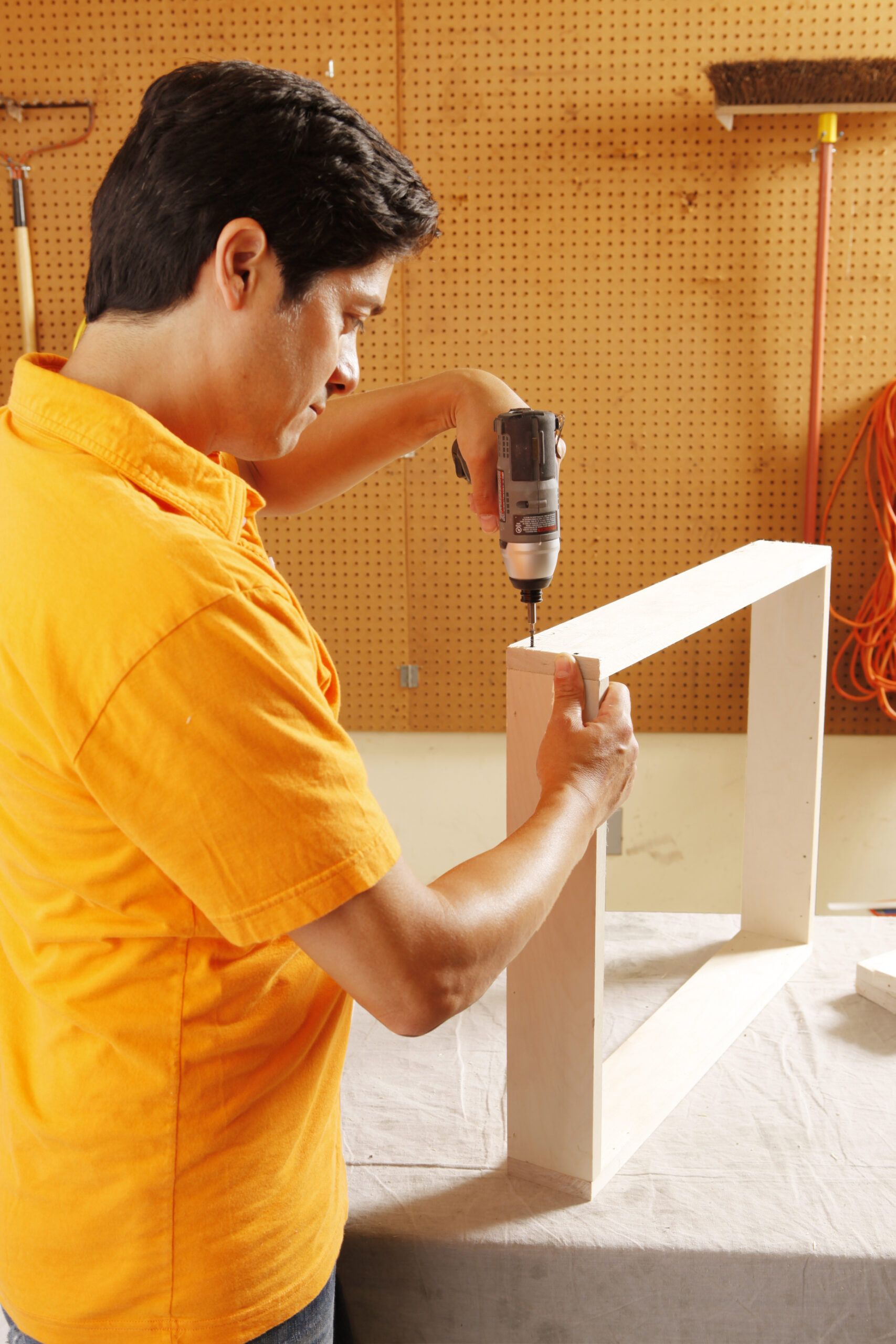
Apply wood glue to the cut edges of the bed frame’s 1×4 short sides. Sandwich these pieces between the 1×4 long sides to make a frame. Secure the frame by driving 1¼-inch screws through the long sides and into the edges of the short sides, as shown.
Step 9
Install the Crosspieces and Stop Block
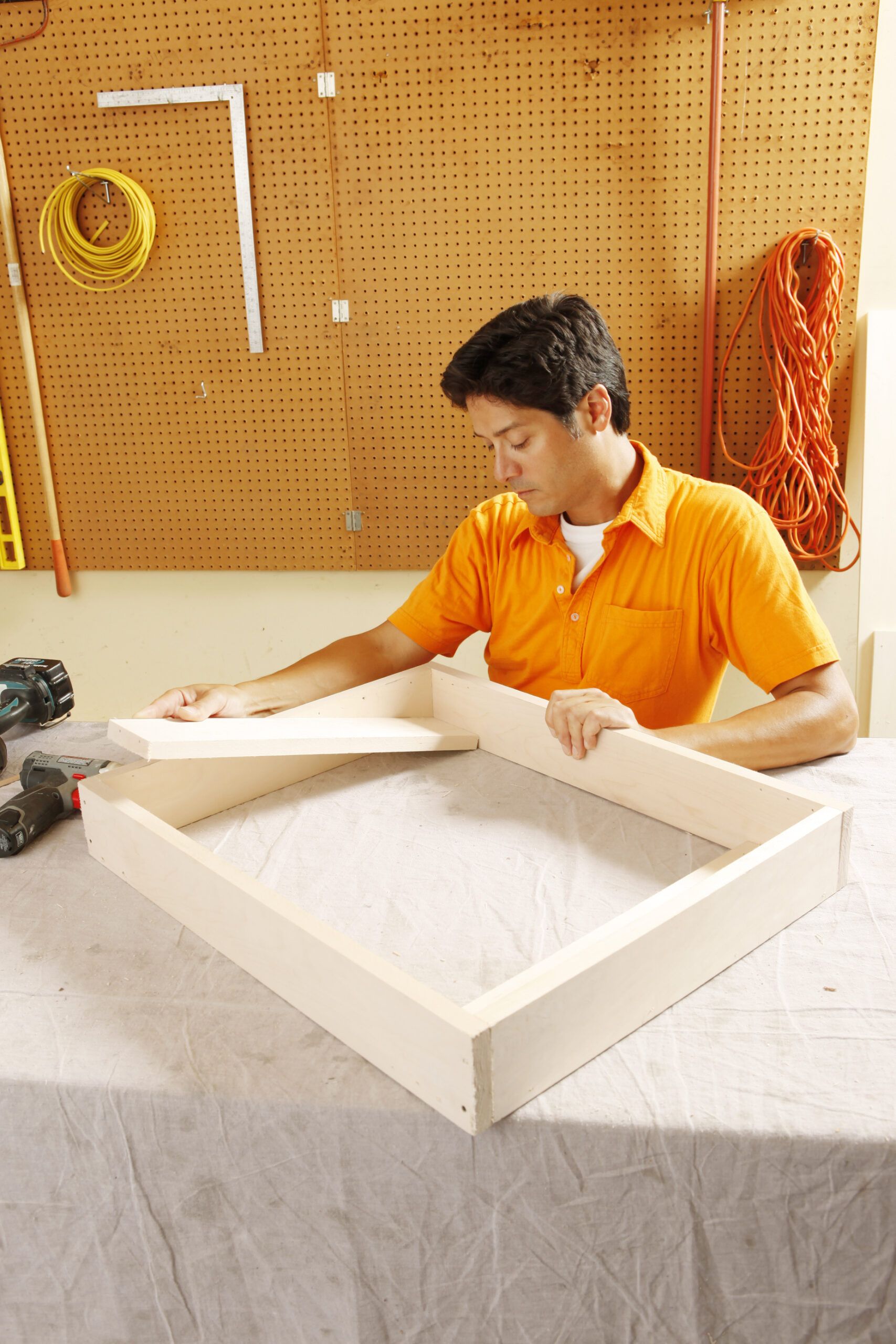
Place two 1×4 crosspieces on the flat between the long sides of the bed frame so that they’re butted against the inside surfaces of the short sides, as shown. Drive 1¼-inch trim-head screws through the long sides and into the ends of the crosspieces to secure them. Use 1¼-inch trim-head screws to secure the 1×4 stop block to the outside surface of one long side of the frame, flush with the top, to create a spot for the locking pin you’ll make in the final step, Step 18.
Step 10
Lay Out the Doors and Drawer
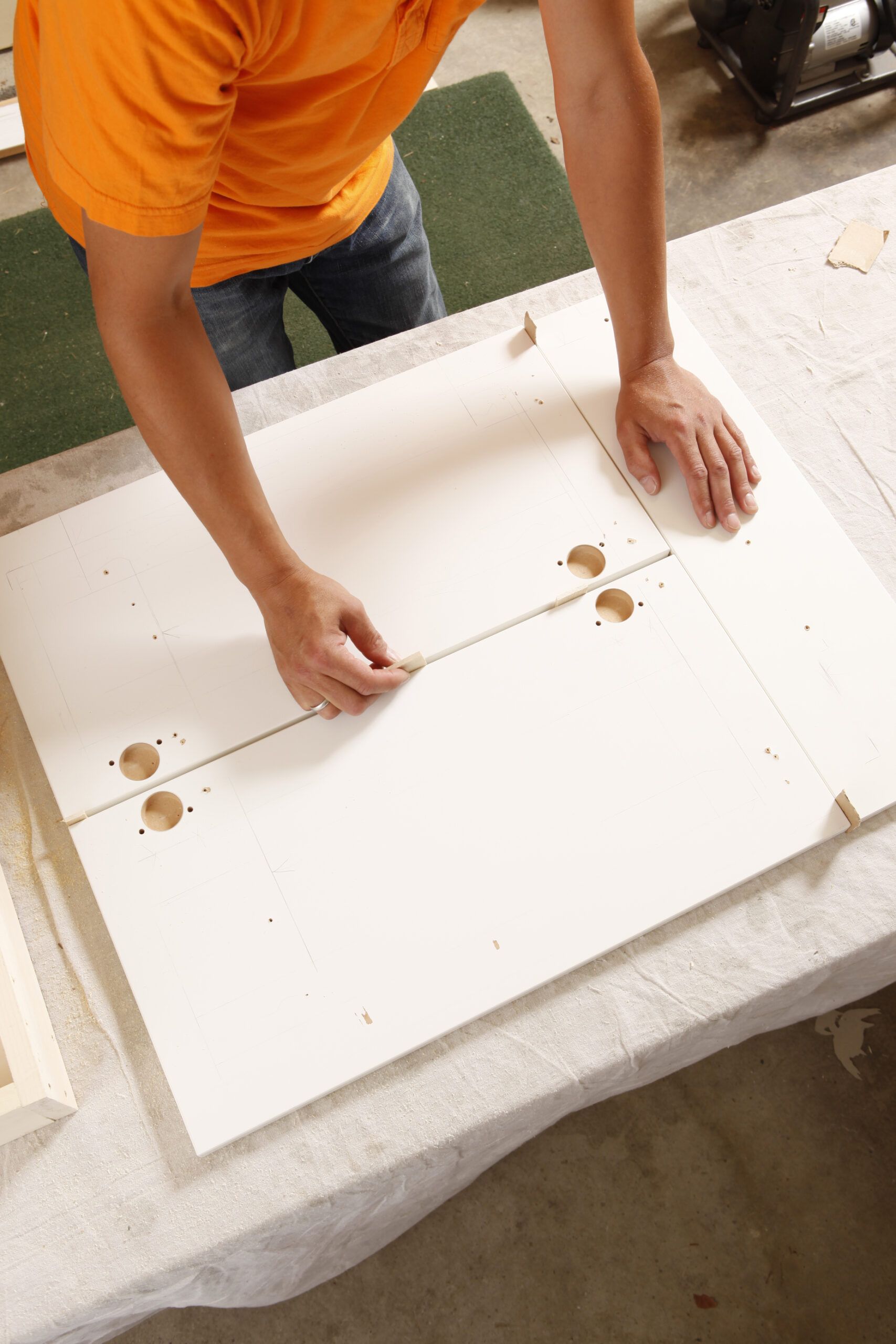
Lay the cabinet doors and drawer facedown and use ¼-inch shims to create even spacing between the three pieces. Lay the bed frame onto the doors and drawer so that it’s centered horizontally on the doors and the top is 3¾ inches below the top of the drawer. Use a pencil to trace the outline of the bed frame onto the doors and drawer. (Our outline fell 3¾ inches from the top of the drawer, 1½ inches from the sides of the doors, and 1½ inches from the bottoms of the doors.)
Step 11
Screw the Bed Frame to the Cabinet Doors
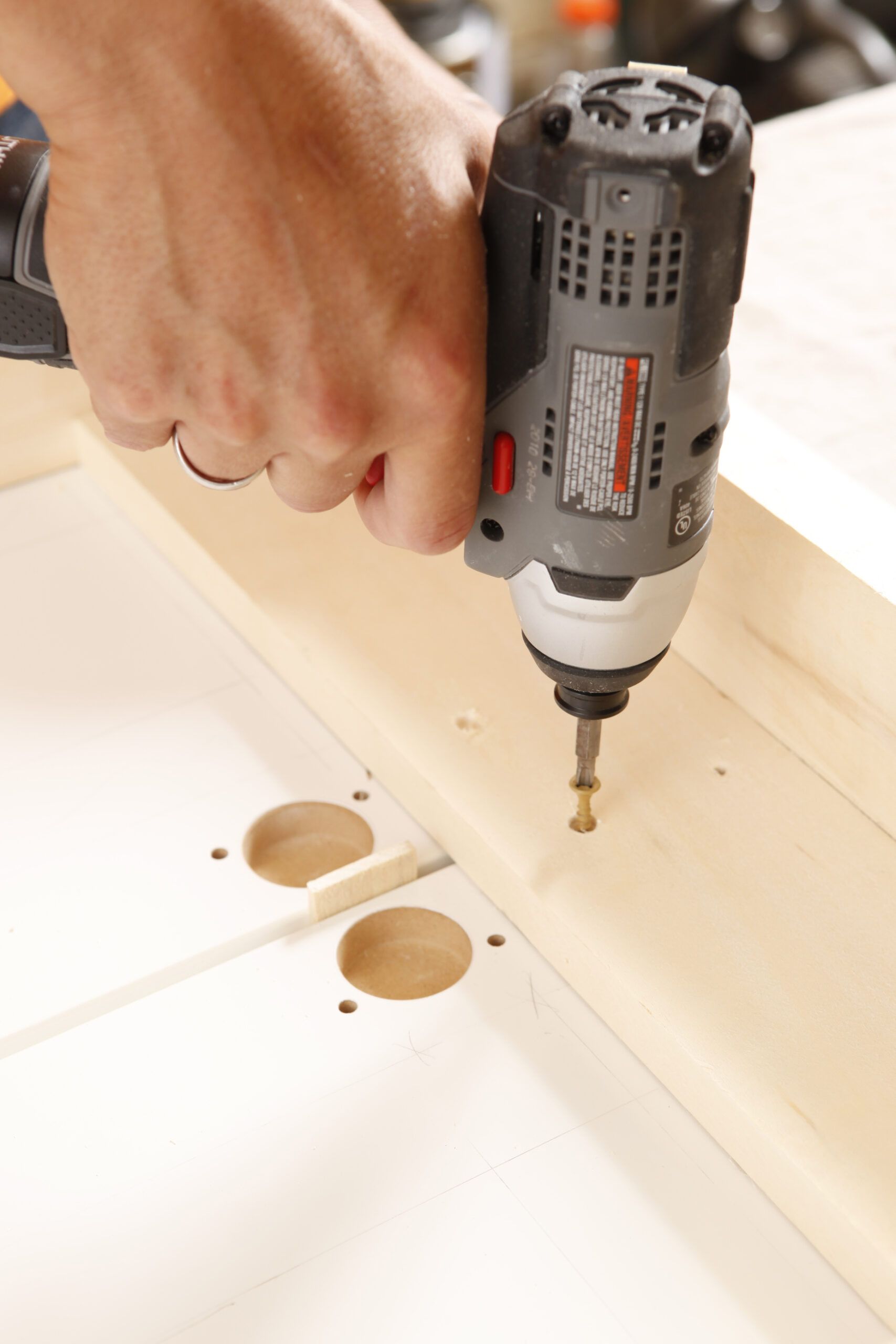
Position the bed frame inside the outline you drew in Step 9. Drill pilot holes through the frame’s crosspieces and into the top and bottom rails of the doors, where the wood is thicker. Drive 1-inch screws through the pilot holes to secure the bed frame to the doors. Do not screw the bed frame to the drawer.
Step 12
Attach the Drawer to the Bed Frame
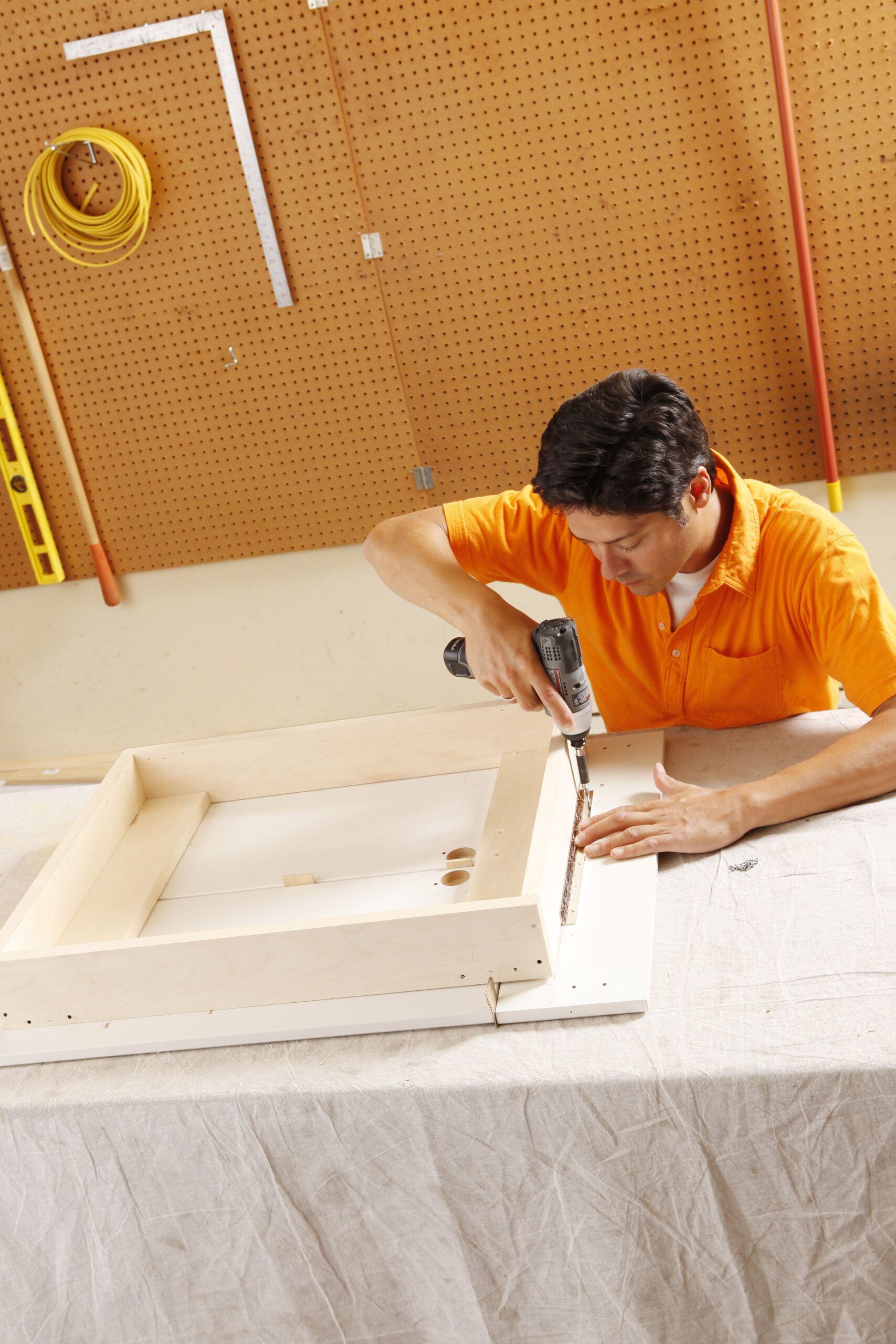
Position a toy-box hinge on the backside of the drawer where it meets the top face of the bed frame. Use the included screws to affix the hinge to the drawer and frame. Remove the shims between the cabinet doors and the drawer. You’ve now completed the deck of the bed.
Step 13
Attach the Deck to the Cabinet
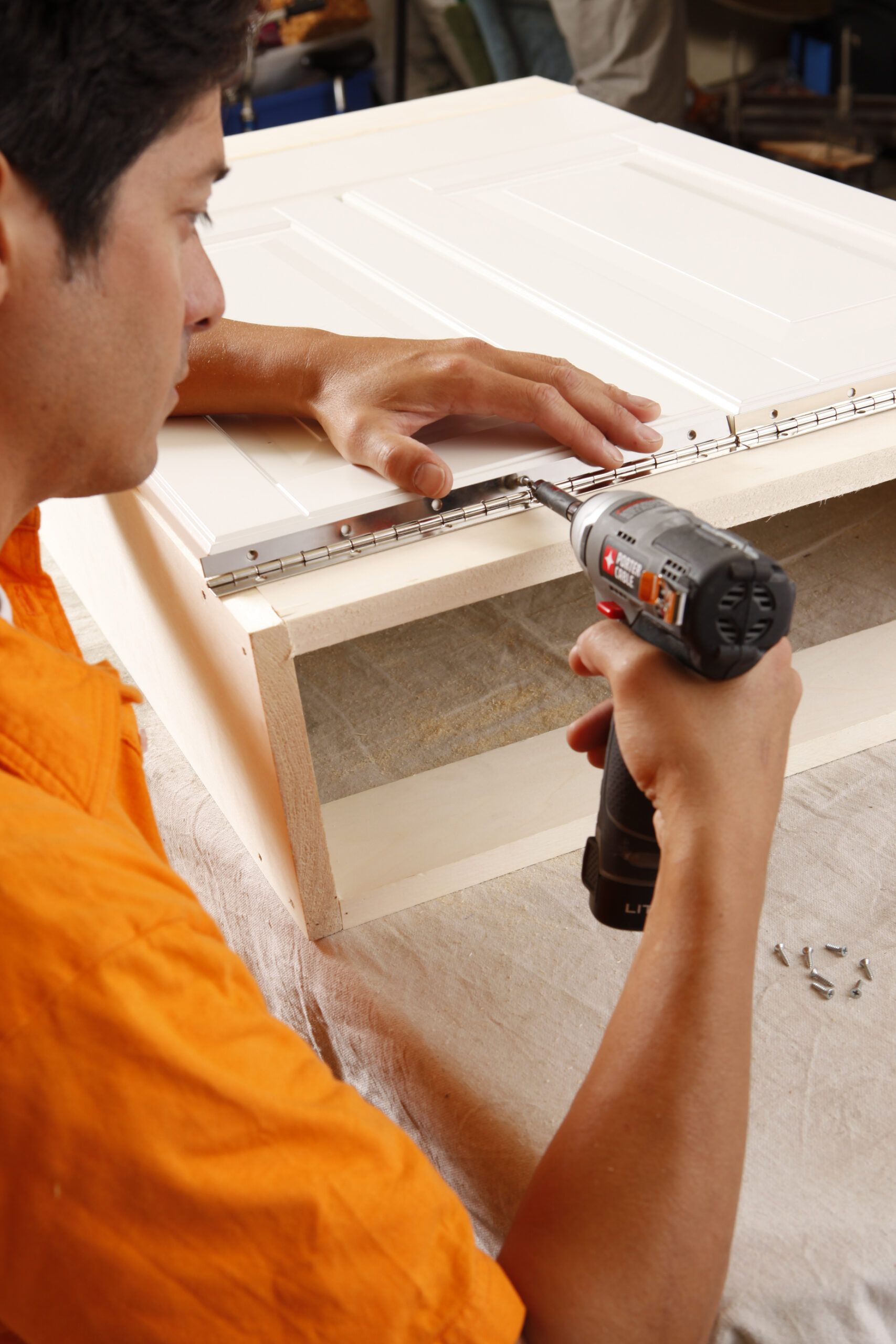
Lay the cabinet faceup on a work surface and lay the deck on top of it. The bed frame should fit within the cabinet, and the backside of the doors and drawer should rest atop the cabinet’s edges. Use shims to create even spacing between the top edge of the drawer and the header, and between the doors and drawer and the sides of the box. Position a toy-box hinge on the cabinet’s lower crosspiece where it meets the bottom edge of the cabinet doors. Use the included screws to affix the hinge to the cabinet and the deck. (If necessary, use multiple hinges to span the cabinet’s width. Ours required two.)
Step 14
Attach the Magnetic Catches
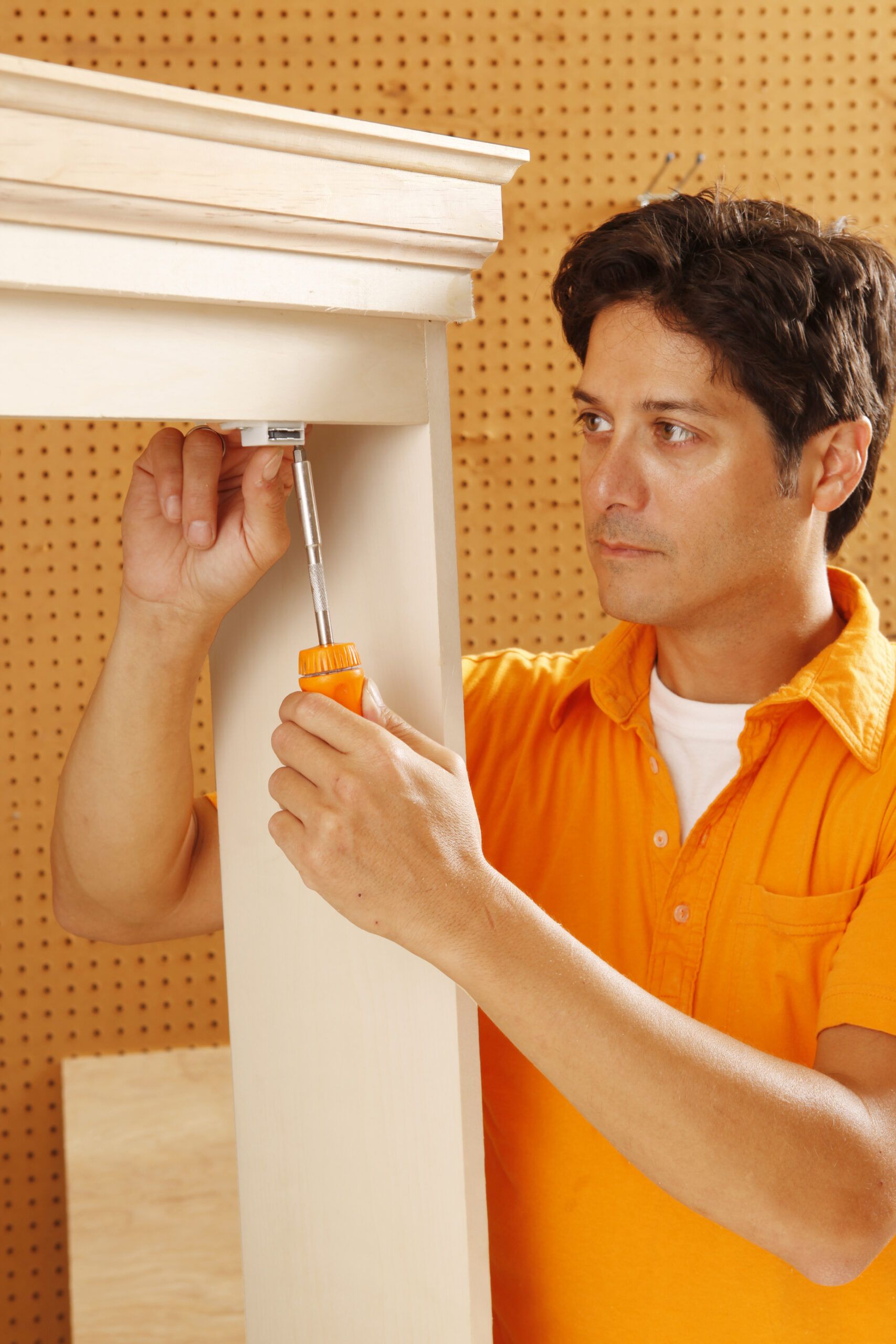
Use a screwdriver and the included screws to attach magnetic catches to the bottom edge of the cabinet’s upper crosspiece, as shown. Then place the included magnets on the catches, fold the deck upright, and use a pencil to mark the locations where the magnets fall on the back side of the drawer. Fold the deck down. Use the included screws to attach the magnets to the back side of the drawer at the spots you marked.
Step 15
Attach the Back of the Cabinet
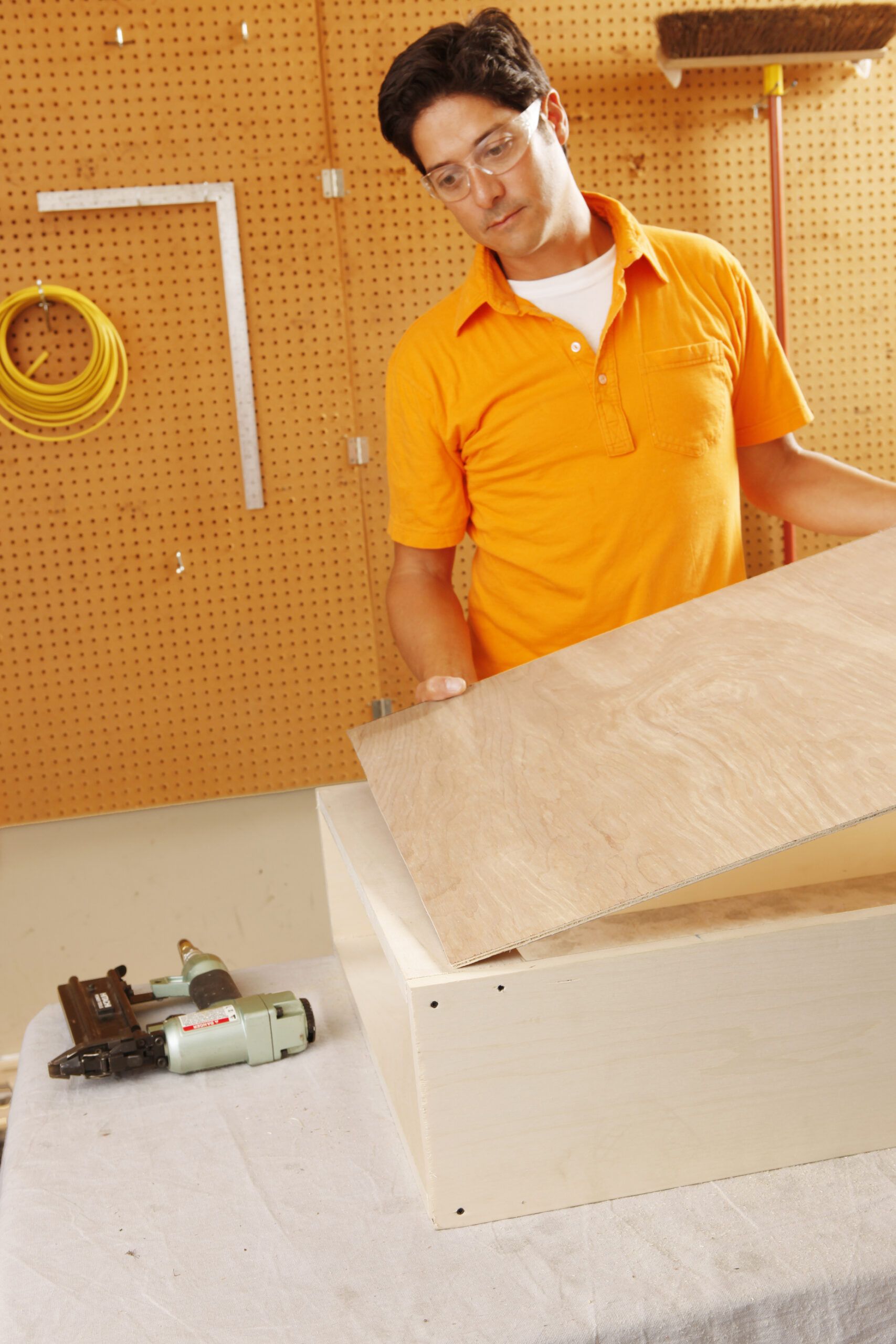
Turn the cabinet facedown. Use a pneumatic nailer and ¾-inch finishing nails to secure plywood back to the cabinet.
Step 16
Install the Cabinet Hardware
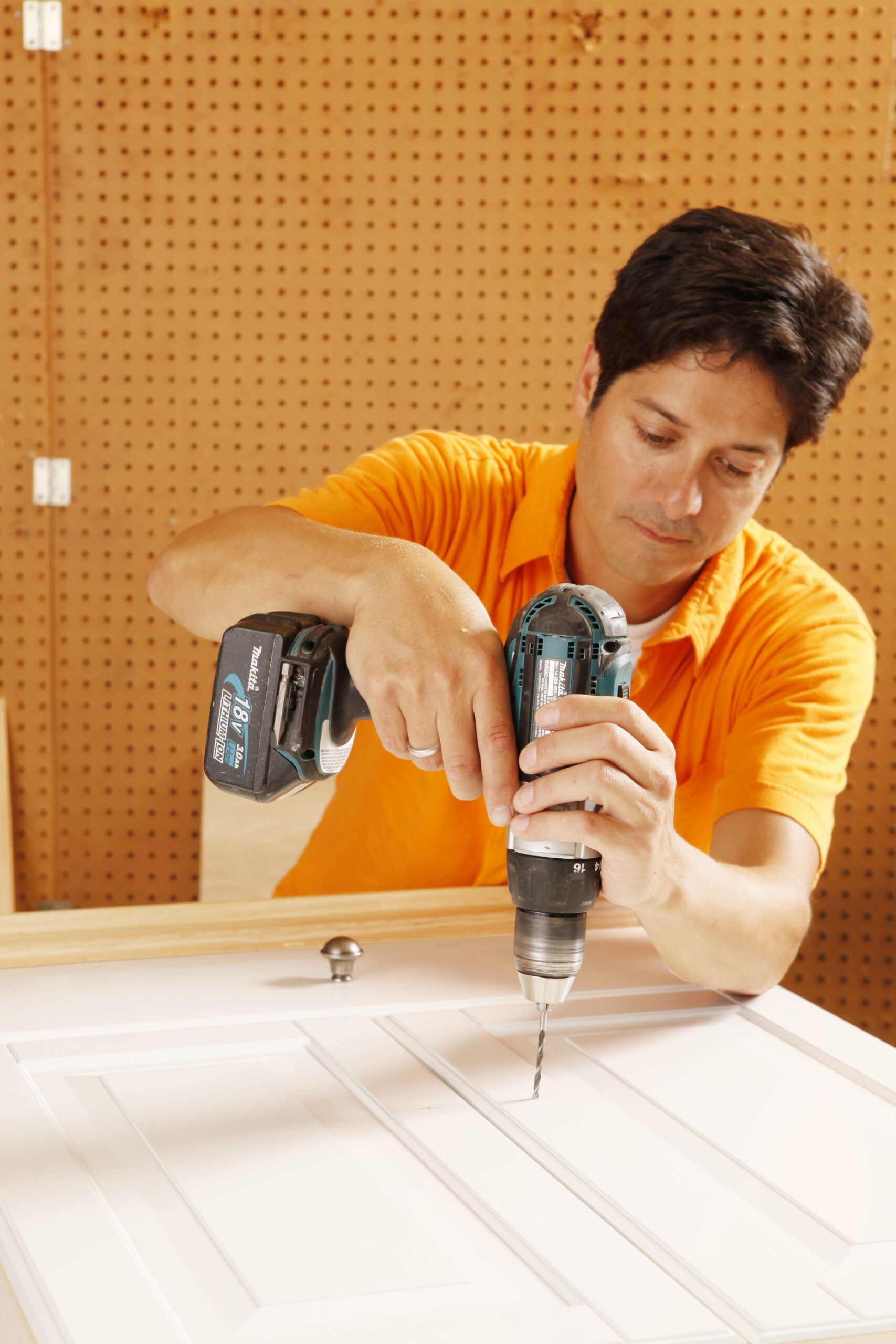
Drill pilot holes for the door and drawer hardware. Use a screwdriver and the included screws to install knobs or pulls.
Step 17
Fill Holes and Paint the Cabinet
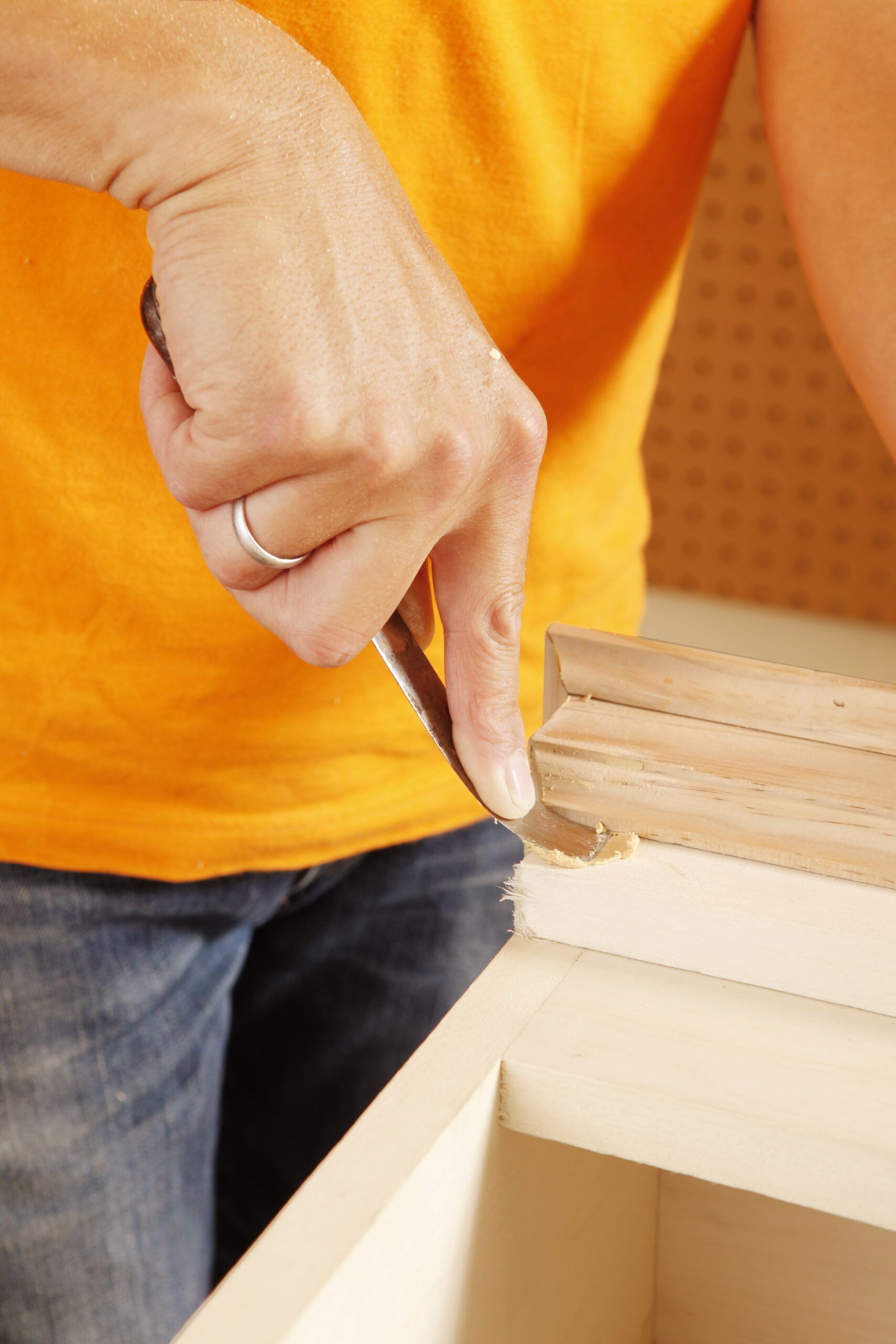
Use a putty knife to fill joints and nail holes with wood filler. Sand the entire assembly, outside and inside, with 220-grit sandpaper. Prime and paint the cabinet with semigloss paint.
Step 18
Install the Locking Pin
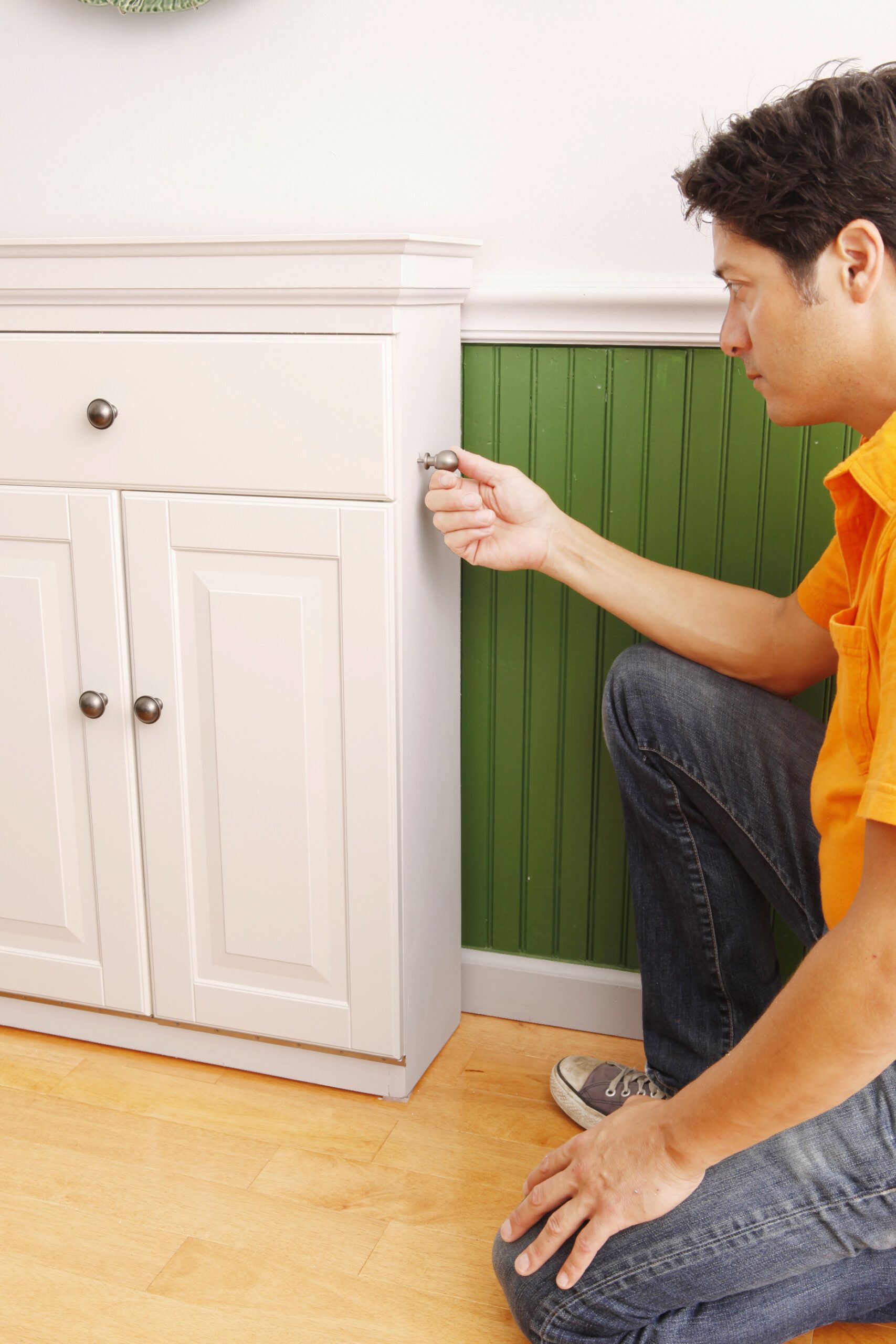
Drill a ⅜-inch pilot hole through the side of the cabinet and into the stop block you installed in Step 9. Insert a knob fitted with a 1¾ inch threaded pin into the hole; this will secure the deck upright when the bed is not in use.
